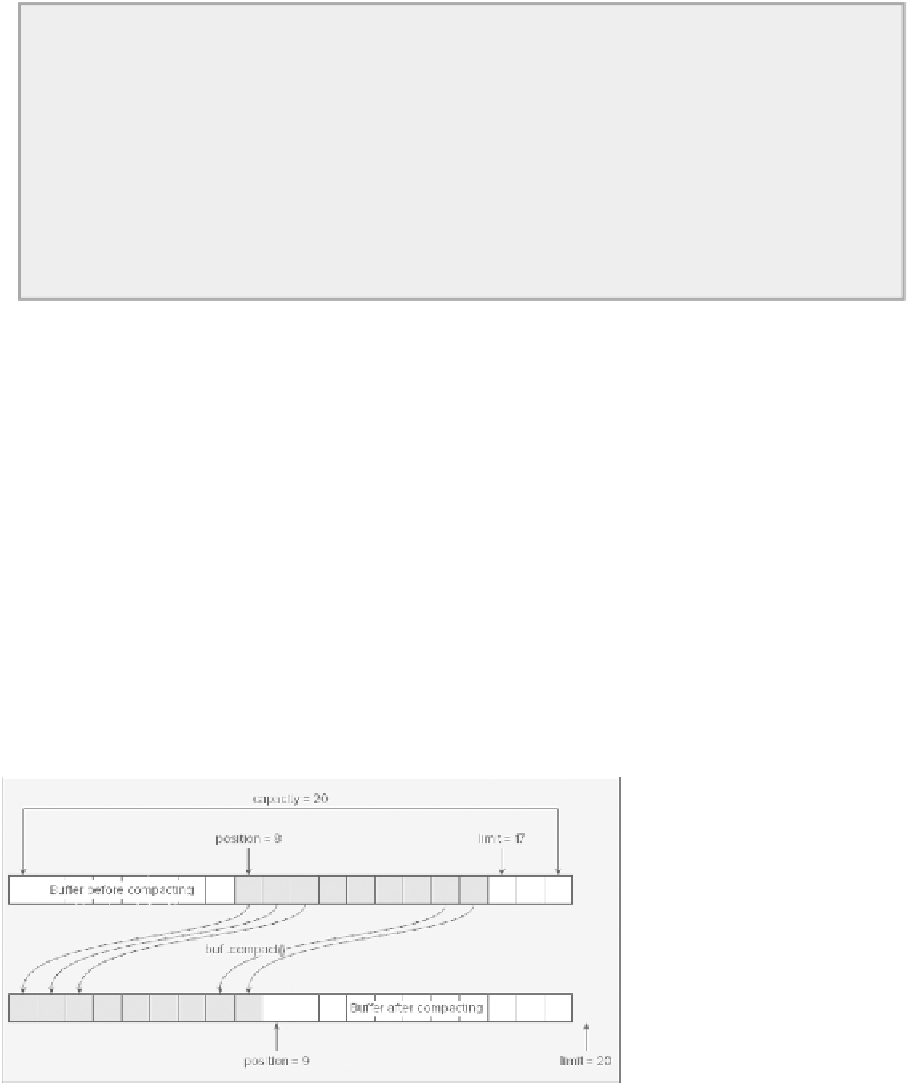Java Reference
In-Depth Information
strLength,
((ByteBuffer)(buffers[0].flip())).asCharBuffer().toString(),
((ByteBuffer)buffers[1].flip()).getLong());
You obtain the string by calling the
asCharBuffer()
method to obtain a
CharBuffer
object from the
original
ByteBuffer
and calling its
toString()
method to get the contents as a
String
object. It is
necessary to flip the byte buffer before you do this and you have to cast the reference returned by the
flip()
method to type
ByteBuffer
in order to make this possible because
flip(
) returns a reference of
type
Buffer
. You use a similar mechanism to get the binary prime value.
Finally you clear the buffers for the string length and prime value ready for the next loop iteration.
Compacting a Buffer
Another approach to reading the
primes.txt
file is to read bytes from the file into a large buffer for effi-
ciency and then figure out what is in it. Processing the data needs to take account of the possibility that the
last data item in the buffer following a read operation may be incomplete — part of a
double
or
long
value
or part of a string. The essence of this approach is therefore as follows:
1.
Read from the file into a buffer.
2.
Extract the string length, the string, and the binary prime value from the buffer repeatedly until no
more complete sets of values are available.
3.
Shift any bytes that are left over in the buffer back to the beginning of the buffer. These are some
part of a complete set of the string length, the string, and the binary prime value. Go back to point 1 to
read more from the file.
The buffer classes provide the
compact()
method for performing the operation you need in the third step
here to shift the bytes that are left over in the buffer back to the beginning. An illustration of the action of
As you can see, the compacting operation copies everything in the buffer, which are the data elements
from the buffer's current position, up to but not including the buffer's limit, to the beginning of the buffer.
The buffer's position is then set to the element following the last element that was copied, and the limit is

